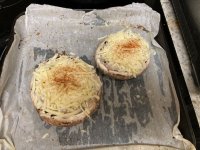When I was in Bengaluru in 2010 I took a tour of the palace, which is the summer residence of the Maharajah of Mysore (Bengaluru is much cooler than Mysore, which is about 100 Km to the west, nearer the coast). The tour guide was so ancient he almost creaked when he moved. There were a lot of things related to the previous Maharajah, who was something of a playboy, and there were photographs of him with Lord Mountbatten and various Hollywood celebs of the 1940's. I was a little confused about timelines and which generation of Maharajah was responsible for which bits I was looking at (anything that wasn't the current guy was referred to as "the old king"). There were some very European-style paintings done by one of them, I assume the Hollywood playboy, which all featured naked European women. Anyway there were various elephant bits around, like an umbrella stand made from an elephant's leg, etc, and in one stairwell a massive elephant head (with tusks) was mounted on the wall.Elephants are mostly taken care of in South India
My tour guide paused to give an explanation of the elephant head (and apparently the other bits all came from the same beast). I am going to try to transcribe what he told me faithfully, and nothing here is intended to belittle or denigrate, I just want to capture what he said. Again, this man as old AF and his English was not great. He told me: "One time elephant came from forest into city, this same elephant. Kill many people. People ask king for help. King go into forest, find same elephant, this one. King kill elephant. People very happy."
Now the Maharajah of Mysore has a large number of domesticated elephants, it's kind of a symbol of his kingship that he possesses so many elephants, and they bring them out for parades and whatnot. The people there have great respect and love for elephants, but they also understand that a "rogue" elephant can be a threat to human life and can do great damage, so one role of the king is to protect his people from such an animal. It was rather moving to hear that story from that old man, who may well have been just a generation away from the events he described.
On more anecdote about elephants: When I ran a fishing lodge on the Margaree River in Cape Breton, NS, I had a guest (twice) who was a taxidermist from New York who was well known and highly respected (and I wish I could remember his name). When I was guiding the editor of Field & Stream magazine and I mentioned that taxidermist, he stopped in his tracks and said "Your know ...?" (substitute name of taxidermist). Anyway when I was guiding the taxidermist he spent some time describing to me the process of mounting a dead elephant. The animal, having been killed by an American hunter in Africa, was cut into large pieces and the hide removed and packed in salt, and crated and shipped to him in New York. He then spent weeks carefully cutting down the hide, because it is so thick and can't be cured or handled until it is shaved down. Then more weeks tanning it, then constructing a wooden frame over which to stretch the hide, and stitching it all back together but in a way that you wouldn't notice the seams. It was huge process, and I can only assume the hunter spent at least as much on the taxidermy as he did on going to Africa and hunting an elephant. It was one of those moments when I found myself thinking "Wow, people actually do this, and this guy talking to me has done something that very few people in the world have ever done. I would rather the elephant wasn't killed, but still..."
I am lucky enough here to have some shops that stock Iranian saffron. The quality is very high and the price reasonable. Spain can produce some of the very best saffron, and used to, but you cannot pay people in Euros to pick, sort, dry, grade, and package five thousand crocus flowers to make an ounce of saffron, and expect to make a profit. Much Spanish saffron now is lower grade with poor colour and flavour.Saffron is mainly grown
Valentines meal was quite good.
Carrot juice apertif.
Caviar followed by the sea grass on avocado salad.
Scallops on bacon (partly eaten) followed by the stuffed mushrooms (before cooking)
Finished with cake
I got extra smooches.
Carrot juice apertif.
Caviar followed by the sea grass on avocado salad.
Scallops on bacon (partly eaten) followed by the stuffed mushrooms (before cooking)
Finished with cake
I got extra smooches.
Attachments
One thing that fascinates me with food. Is how various cultures are synonymous with ingredients that they didn't have access to before they were introduced from the Americas.
Chilli with Indian and Asian food.
Tomatoes with Italian food.
English with potatoes.
I'm sure there are more.
Indian food with no chili just doesn't make sense to me.
Bangers and mash with no taters.
Lasagna with no tomatoes?
Chilli with Indian and Asian food.
Tomatoes with Italian food.
English with potatoes.
I'm sure there are more.
Indian food with no chili just doesn't make sense to me.
Bangers and mash with no taters.
Lasagna with no tomatoes?
It seems tomatoes and maybe potatoes came from the American continent,...
I wonder what was used in their place prior to their introduction...
I wonder what was used in their place prior to their introduction...
Cheese and animal fat for pasta. Maybe some herbs thrown in for good measure. Runny sauces could be made thicker with processed grains or maize. Pasta evolution was a result of the variables of sauce. ie: maybe there was a limited number of shapes before tomatoes?
Polenta and other similar dishes before potatoes.
Polenta and other similar dishes before potatoes.
Last edited:
Pasta, of course, came to Europe from China, but quite a bit before the Columbian Exchange. No thickening with maize before that though, since that was exclusive to the Americas. Hence also no polenta as we know it, though I gather it was made going back to Roman times but from barley and other flours (even chestnut flour).
A lot of beans and squashes were also unknown outside the Americas.
One of the interesting things about some of these foods is that no progenitor species has been identified with certainty. The closest anyone has come for maize is not a plant that you would look at and think you could turn it into food. Tomatoes are genetically related to some plants native to South America, but the tomatoes were only grown in MesoAmerica, and there is no local wild progenitor plant. So someone did some amazing breeding over a long period of time to turn teosinte into something we would recognize as corn, and unlike wheat domesticated corn will not reproduce without human intervention. And someone took a mostly useless plant in South America to Central America and turned it into tomatoes.
A lot of beans and squashes were also unknown outside the Americas.
One of the interesting things about some of these foods is that no progenitor species has been identified with certainty. The closest anyone has come for maize is not a plant that you would look at and think you could turn it into food. Tomatoes are genetically related to some plants native to South America, but the tomatoes were only grown in MesoAmerica, and there is no local wild progenitor plant. So someone did some amazing breeding over a long period of time to turn teosinte into something we would recognize as corn, and unlike wheat domesticated corn will not reproduce without human intervention. And someone took a mostly useless plant in South America to Central America and turned it into tomatoes.
And we are glad they did. My honey oft refers to me as Mr. Tomatohead. I wear the badge with honour.
My son flew down from Seattle.
In'N'Out burgers: protein style, mustard grilled, fresh and grilled onions. French Fries.
Home made curry udon
A full jamon serrano on the carving block.
Red wine from Santa Ynez valley.
Ketchup and Sriracha.
In'N'Out burgers: protein style, mustard grilled, fresh and grilled onions. French Fries.
Home made curry udon
A full jamon serrano on the carving block.
Red wine from Santa Ynez valley.
Ketchup and Sriracha.
If we are going to talk about Cajun I will just leave this here.
I was lucky enough to see real Cajuns and the food and the music.
Bob, my wife laughed out loud.
Tony, that all sounds really good.
Tony, that all sounds really good.
- Home
- Member Areas
- The Lounge
- The food thread





